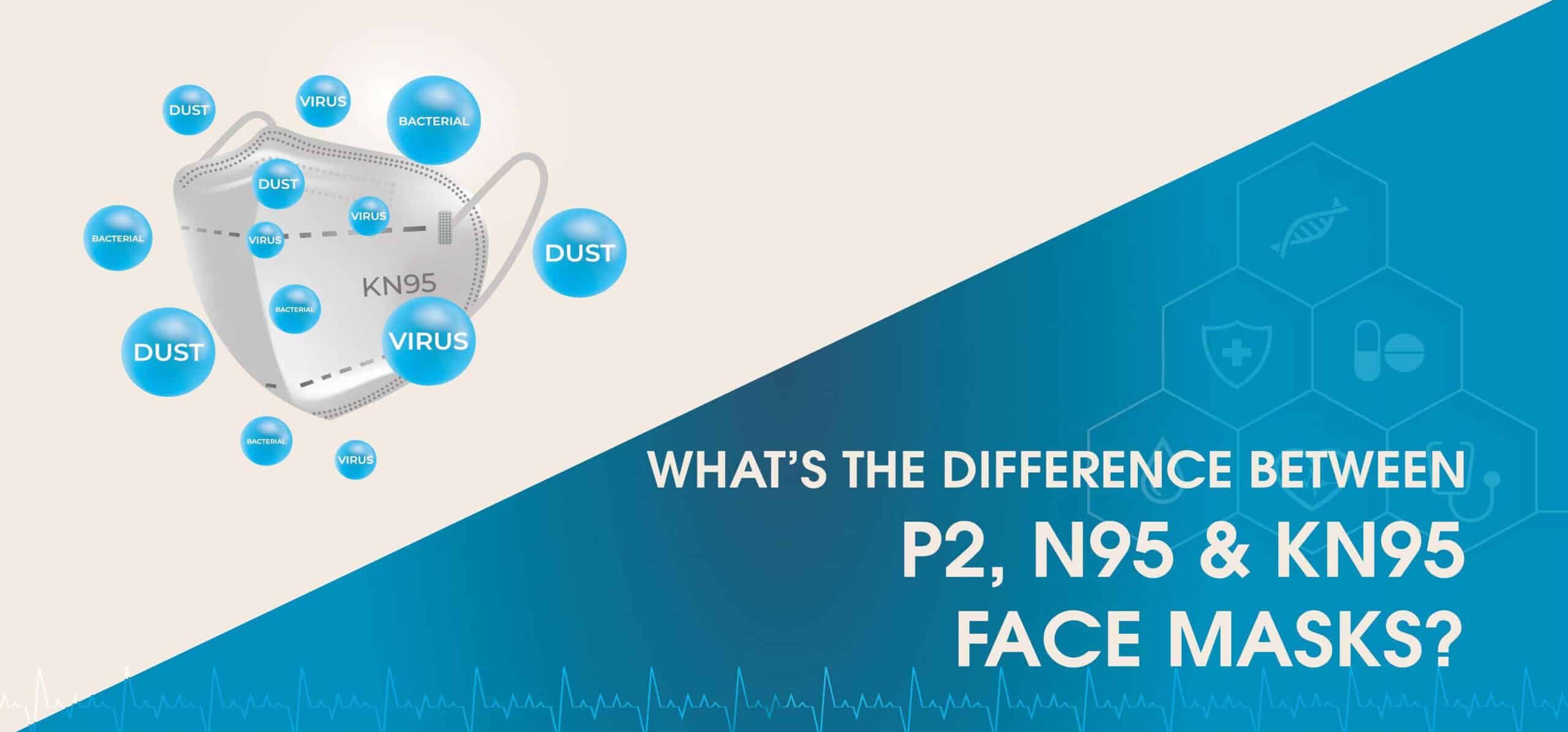
Face mask restrictions may be easing, but it seems this modern-day accessory isn’t going anywhere just yet. In a covid-dominated world, surgical masks have become an integral part of our everyday lives. And for many a workplace requirement we can’t leave the home without. But despite its normality, there’s increased confusion surrounding mask terminology which may leave you wondering if you need a medical degree to make the right choice.
The most common masks worn in Australia for covid prevention are the P2, N95 and KN95 face masks. But do you know how they differ in efficiency against Omicron? If you’re looking for a mask that does more than just match your outfit, here’s what you need to know.
What are those masks and what they do?
Surgical Face masks attract a wealth of different terminologies, including ‘Filtering Face-piece Respirators’ (or FFP) and ‘Particulate Filter Respirators’ (or PFR). Both umbrella labels for a multitude of varying products branded with numerous letters and numbers.
The masks are made of multiple layers of synthetic material designed to filter out particles which will minimise the spread of airborne contamination through the nose and mouth. They all serve the same purpose, to reduce the risk of contracting or spreading the coronavirus.
The main difference between products is their certification or where in the world it is produced which determines which mandatory testing it has to fulfill to be eligible to go on the market.
The Australian and New Zealand standard for Respiratory Protective Devices is called AS/NZS1716. Prior to becoming an everyday face mask worn by the public, it was most commonly used in the construction industry to minimise the inhalation of dust particles. Along with the N95, they’re also recommended by the government as the face mask of choice when exposed to smoke from bushfires. The ‘P’ rating relates to the particle size it filters, with the P2 face mask promising to filter at least 94% of airborne particles.
Other points of difference relate to what is measured when undergoing tests to meet certification mandates. Unlike the N95, the P2 masks are required to conduct a ‘fit test’ in order to be certified and approved for sale. This is where the air inside and outside of the mask is tested as well as measuring how well it fits the face. The product must also fit within guidelines for ‘exhalation resistance’, which refers to the ease at which a user can breathe out. This means manufacturers must test P2 masks for carbon dioxide clearance to prevent build up from inside the respirator.
The N95 is the US equivalent of the P2. It’s an American/Canadian classified surgical face mask certified by the National Institute of Occupational Safety and Health or NIOSH. The ‘N’ stands for ‘non-oil’, meaning it’s suitable for environments that do not contain oil particles which makes them fine for the purpose of preventing or spreading covid.
The number ‘95’ in the name refers to its efficiency rating. It removes 95% of 0.3 micron particles compared to the P2 which removes 94%. The coronavirus is actually around 0.1 microns in size but is often attached to something larger.
The KN95 is a face mask certified by China and is equivalent to P2 and N95. As the name suggests, they filter out 95% of 0.3 micron particles just like the N95. The KN95 is aesthetically quite different in that it allows a larger space between the mask and face, allowing more breathing room. Like the P2, the KN95 must also undergo ‘fit testing’.
There’s a huge market for face masks with many poor-quality options and fake versions of authorized products like the P2, N95 and KN95. Make sure you buy your mask from a credible source. And whatever you decide to choose, the most important thing to remember is that they will only be effective in preventing and spreading covid if it fits your face properly.
Jane Whitelaw, a Certified Occupational Hygienist and a fellow of the Australian Institute of Occupational Hygienists (AIOH) told ABC News that “if you put a respirator on and your glasses or sunglasses fog up then that’s an example that it’s not fitting correctly”.
Juice Promotions has an extensive range of surgical face masks in stock. In addition to the KN95, P2 and N95 face masks, we have a range of TGA-approved surgical face masks and reusable cloth face masks to fit all budgets and tastes.
For more information, feel free to contact our friendly team to inquire about products, obtain a quote or place an order: [email protected]









Hi, this is a comment.
To get started with moderating, editing, and deleting comments, please visit the Comments screen in the dashboard.
Commenter avatars come from Gravatar.